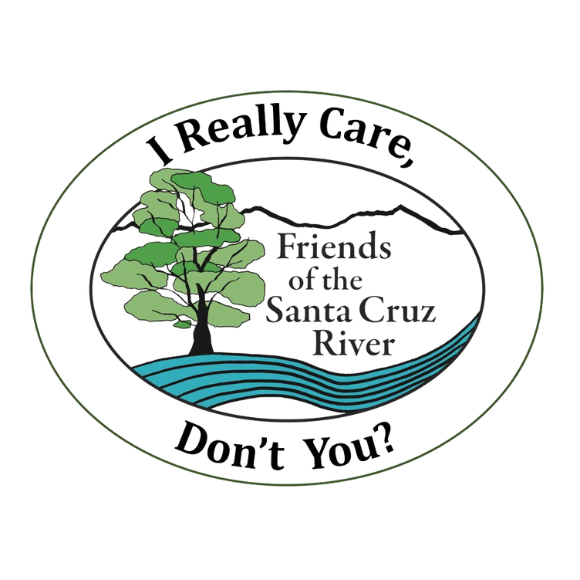[et_pb_section bb_built=”1″][et_pb_row][et_pb_column type=”4_4″][et_pb_image show_in_lightbox=”off” url_new_window=”off” animation=”off” sticky=”off” src=”https://friendsofsantacruzriver.org/wp-content/uploads/2014/10/issues_bloodworms.jpg” alt=”Proliferation of blood worms” title_text=”Proliferation of blood worms” show_bottom_space=”on” animation_style=”none” animation_duration=”1000ms” animation_intensity_slide=”50%” /][et_pb_text background_layout=”light” background_position=”top_left” background_repeat=”repeat” background_size=”initial” _builder_version=”3.0.90″]
Water Quality
THE GOOD NEWS is that the river’s surface water is now cleaner than it has been in years.
Effluent (cleaned wastewater) discharged into the river from the Nogales International Wastewater Treatment Plant (NIWTP) has kept the river flowing over the past several years as natural inputs have declined. (Read more at our A River Needs Water page.)
But inadequate sewage treatment, combined with drought, caused deterioration of the river’s life-sustaining qualities. By 2007, we had lost all our native fish, and the smelly, murky flow supported fistfuls of pollution-tolerant “blood worms” (pictured above)!
But in 2009, a major upgrade of the NIWTP was completed, thanks to the persistent advocacy of FOSCR and several other groups. This $59 million overhaul vastly improved effluent quality.

The much cleaner water allowed the return of our native longfin dace, Agosia chrysogaster, which still maintains a viable population in the river.
MORE GOOD NEWS: although the river still faces many water quality challenges, it has a great champion in the Arizona Department of Environmental Quality (ADEQ). A recent example is that of the cadmium pollution, which RiverWatch and other sampling picked up over a two-year period (2009–2011). The Border Team from ADEQ went to bat for the river, tracing the source of this toxic metal across the border and providing assistance to bi-national and Mexican agencies in resolving the problem. http://www.azdeq.gov/obep/download/060311_j.pdf
THE BAD NEWS: The northward-flowing part of the upper Santa Cruz River is still subject to both industrial and municipal pollution from the large Sonora, Mexico city of Nogales as well as the much smaller city of Nogales, AZ. Furthermore, the International Outfall Interceptor (IOI), the main sewage line running through both cities of Nogales to the Nogales International Wastewater Treatment Plant (NIWTP), is in dire need of repair and/or replacement.
LEARN MORE: View the slides from the presentation by Hans Huth of Arizona Department. of Environmental Quality on November 15, 2017 to FOSCR on heavy metal contamination of sewage coming from Mexico. Download a .pdf of the Presentation Slides.
OUR EFFORTS: FOSCR Board member Ben Lomeli has been on the forefront of a community push to get the fixed before there is a catastrophic failure that could send thousands of gallons of raw sewage and industrial waste down the Nogales Wash and into the river.
That push has paid off. Here’s the latest on the international commitment to fix the IOI:
[/et_pb_text][et_pb_testimonial author=”Albert Moehlig” job_title=”From the International Boundary and Water Commission (IBWC)’s ” company_name=”8/6/2014″ url_new_window=”off” quote_icon=”on” use_background_color=”on” background_color=”#f7f7f7″ background_layout=”light” text_orientation=”left” background_position=”top_left” background_repeat=”repeat” background_size=”initial” border_radii_portrait=”on||||”]
The IOI is approximately 8.8 miles in length and was placed into operation in 1972. Since then, it has eroded and developed many cracks. The USIBWC is working with the City to rehabilitate the entire IOI.
The USIBWC is committed to fully fund the first $750,000 of the engineering and design work for the complete rehabilitation of the IOI. The City is committed to providing in-kind services such as traffic control, location of manholes, etc. to facilitate with the design of the project, and will be reviewing all project documents.
The USIBWC recently awarded a contract for the engineering and design of IOI rehabilitation. The USIBWC and the City conducted the kickoff meeting to initiate the project design on June 3, 2014. Assuming that no major issues are encountered during the design process, final design documents should be ready in June/July 2015.
[/et_pb_testimonial][/et_pb_column][/et_pb_row][/et_pb_section]
